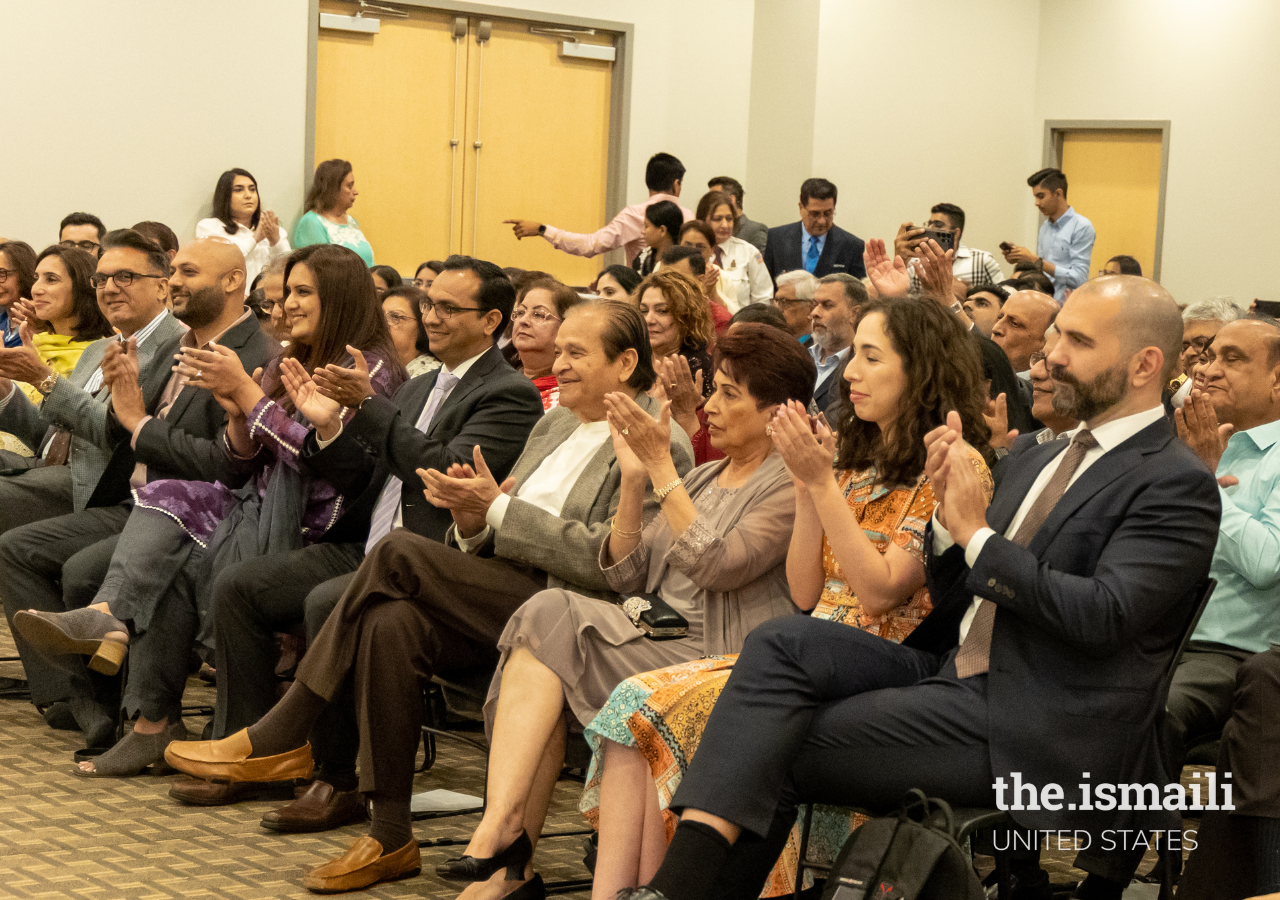An exhibition titled Rumi at the Aga Khan Museum, Toronto, sought to present a visual journey of the life and legacy of Rumi, also known as Jalal al-Din Muhammad Balkhi, celebrating his 750th death anniversary. This highly anticipated exhibition, held between March and October 2023, provided visitors with historical and translational insights into Rumi’s story and his centuries-long impact on poetry, arts, and mysticism.
The exhibition’s curator, Dr. Michael Chagnon, and leaders from the Aga Khan Museum visited Atlanta in late July to inform and address the Jamat on the Museum’s mission and purpose. At the gathering, Ismaili Council President, Dr. Rozina Merchant, offered some welcoming remarks:
“The Aga Khan Museum is truly a source of pride to me, as I am sure it is to many of
you, as the only museum in North America dedicated to diversity and beauty in Islamic art and culture. With Mawlana Hazar Imam’s vision, the Aga Khan Museum aims to educate, build bridges of understanding and tolerance between cultures, and foster a greater appreciation of the contributions the Muslim arts and heritage have made to world heritage.”
The first of two informative sessions was held at the Atlanta Jamatkhana in Norcross. Dr. Chagnon illustrated the Rumi exhibits and gave key insights into the exhibition’s traditional and contemporary art pieces. The Jamat received an opportunity to learn about the exhibition and engage in a question-and-answer session with Dr. Chagnon and the team about the Aga Khan Museum.
Image 7

The following day, an event titled “Mystical Visions on Canvas: A Rumi Inspired Painting Experience” was held at Emory University’s Carlos Museum. Here, Dr. Chagnon highlighted the many influential questions that the exhibition answers through its variety of displays, including experiential art, describing the Museum as “providing] a reason for people to gather and make art versus simply observing it.”
Of particular interest was Dr. Chagnon’s note that Rumi has been a long-standing best-selling English poet in the United States, a surprising fact given that Rumi wrote primarily in Farsi, thus making him known to many “exclusively in translation.” Dr. Chagnon underscored that the exhibition displays the poet’s core beliefs on the importance of religious harmony and love and how they remain universal facets even today.
For 750 years, Rumi and his work have been reinterpreted several times across various communities and their audiences. Dr. Chagnon also explained that a key specialty of Rumi as the first exhibition of its kind is that it concentrates on this figure from multiple angles, including from a historical perspective.
As an inspiring closure to the event, participants partook in a fun visual art activity led step-by-step by an instructor who helped them create their own Rumi-inspired paintings. Participants left the event with tangible and intangible thoughts and ideas on Rumi and his universal and humanistic influence on the world of art and poetry today.
The Aga Khan Museum in Toronto, Canada, holds a significant distinction as the only museum in the Western Hemisphere dedicated to Islamic civilizations and art. As part of its purpose, the museum showcases a variety of performances, art pieces, and programs, endeavoring to educate Muslims and non-Muslims alike and build bridges by promoting an understanding and shared appreciation of the arts from the Islamic civilizations.














